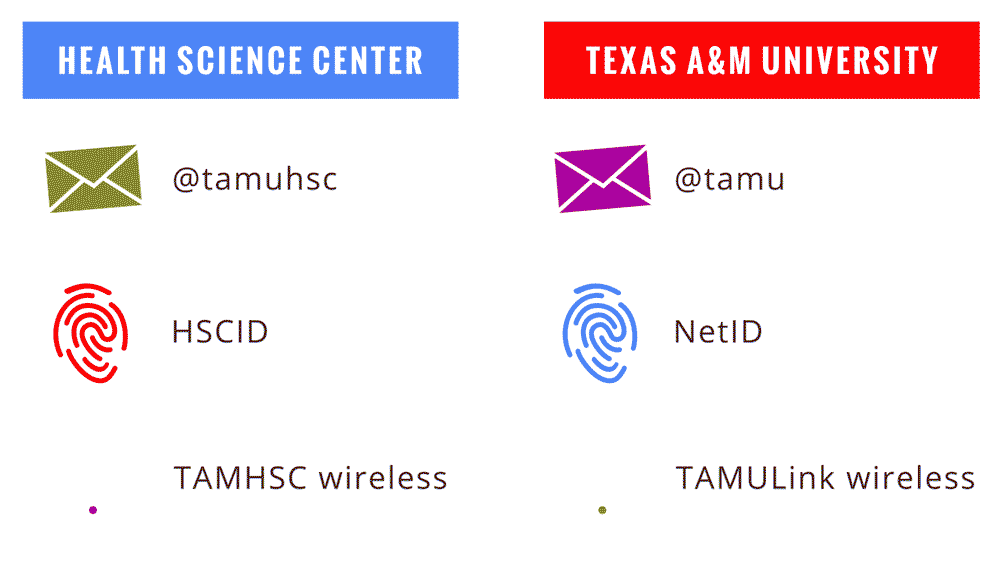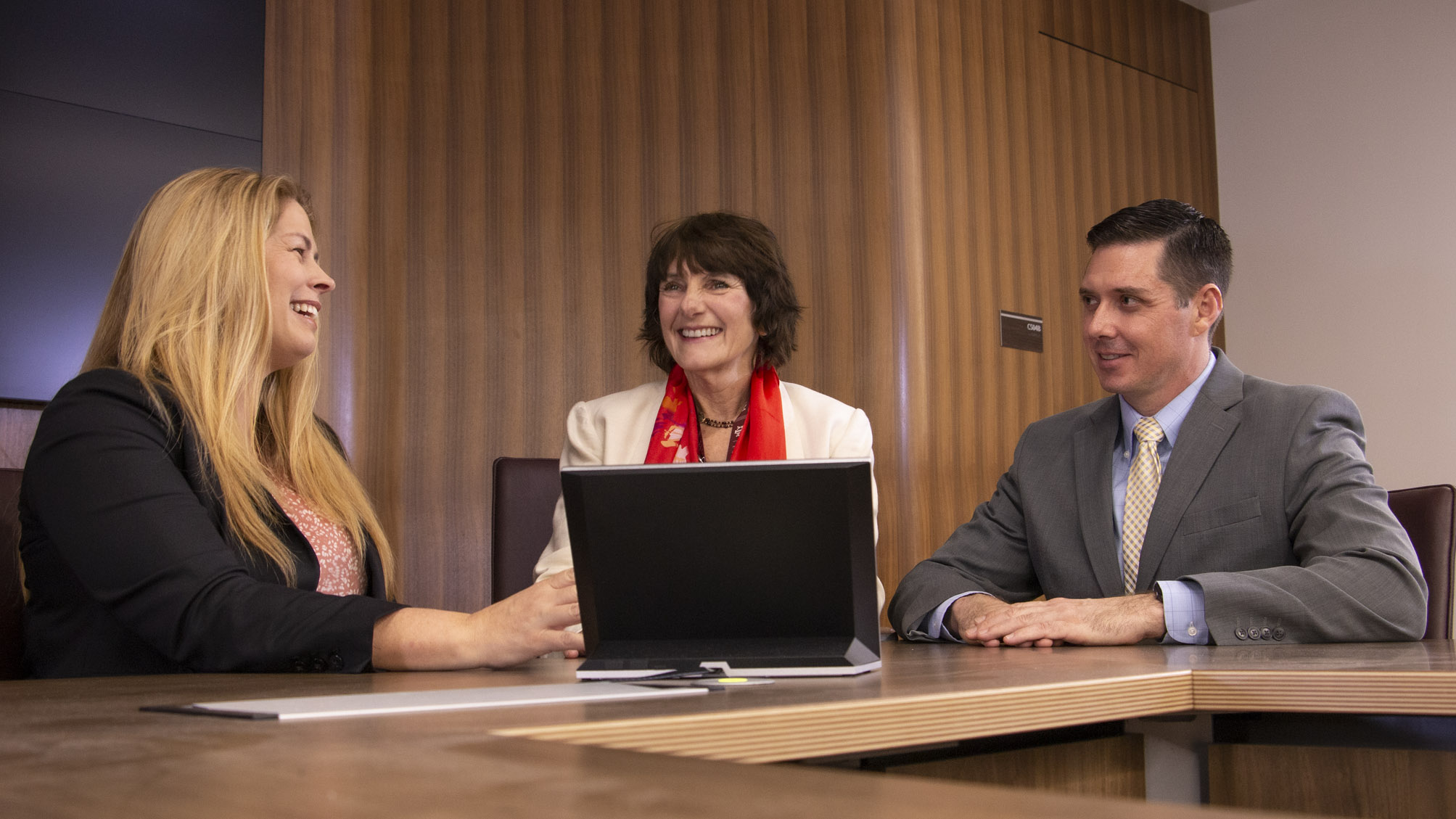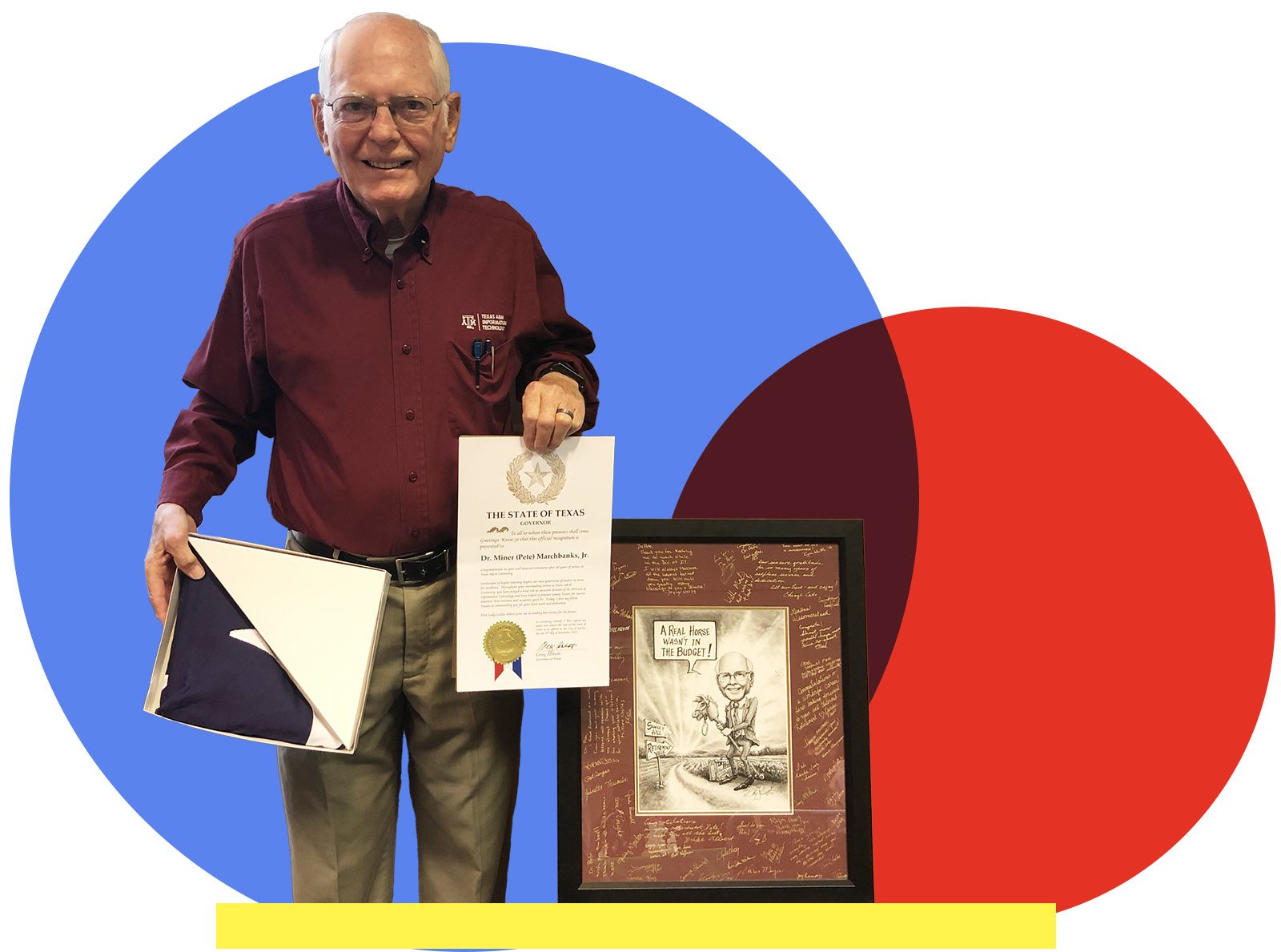From the CIO
Data Center Occupancy Triples, Campus More Secure
The West Campus Data Center (WCDC) is a shining example of the “better together” mantra, as all colleges now have some presence in the facility.
Entities had until September 1, 2019 to consolidate “significant IT equipment” as per System Regulation 29.01.03 regarding the consolidation of significant IT equipment.
“Teamwork was crucial for compliance as the staff and tenants all rolled up their sleeves and helped each other out,” said Cheryl Cato, Associate Vice President for Research & Education Networks and Enterprise Facilities Operations. “It wasn’t just the Division of IT, it was everyone. It took a great team effort to meet the System regulation and it was incredible to witness.”
The gated, centralized location provides 24-hour security and monitoring ensuring the physical security requirements of federal regulations are met and exceeded as well. This further supports Texas A&M’s dedication to groundbreaking research, as compliance ensures the university remains competitive for grants and funding.
"It wasn’t just the Division of IT, it was everyone. It took a great team effort to meet the System regulation and it was incredible to witness."
Texas A&M recently secured a $350 million, five-year grant from the National Science Foundation (NSF) to operate the drillship JOIDES Resolution through the International Ocean Discovery Program (IODP). The NSF toured and reviewed the WCDC and their impression of the facility was a factor in the agreement. The IODP is based in the College of Geosciences, the first college tenant of the WCDC.

“The security, functionality and reliability of the West Campus Data Center are crucial for research and successfully competing for federal funding and then successfully conducting the research and ensuring access to the legacy data we generate,” said Texas A&M College of Geosciences Dean Debbie Thomas. “We are exceptionally fortunate to have this state-of-the-art facility on our campus, and exceptionally fortunate to have the support of such a devoted and talented Division of IT team.”
The WCDC continues to grow as quickly as technology changes. When the facility opened its doors in January 2018, it had two “pods” or groups of IT racks. Currently the facility boasts 10 pods.
“We are still giving tours to prospective tenants, so data center growth will continue,” Cato said. “The Chancellor visited a few times, and recently, a distinguished technologist from Hewlett Packard Enterprise toured. So the facility continues to meet and exceed expectations.”
Texas A&M Health IT Integrates with Division
“Better Together” is not only the theme of this annual report, it perfectly describes the integration of Texas A&M Health (TAMU Health) Information Technology and the Division of Information Technology.

During 2019, the Division of IT migrated the @tamhsc Microsoft Exchange email system to the @tamu email system. The project completed in September 2019 with all mailboxes and distribution lists having migrated. While several challenges were experienced during the migration, the result of the project now offers the ability for TAMU Health to utilize advanced calendaring features with colleagues across the university, a unified email domain name, and all TAMU Health members now have a NetID that will enable access to numerous additional TAMU resources.
"As a technology leader, there is nothing more important than to reduce technical barriers to research and education while enabling technologies that make learning more engaging and research more productive."
The Division of IT also developed strategies to consolidate technologies and reduce technical barriers to research and education. Plans are underway to:
- Integrate the TAMU Health Network with the TAMU Network so campus members only need to log in once instead of toggling between multiple networks.
- Create a single identity by replacing TAMU Health applications that use HSCID or former @tamhsc email addresses to sign-in with the TAMU NetID.
- Deliver a reliable solution for fast access to software installation on workstations.
- Offer secure research services in the cloud that will enable fast access for both funded and unfunded grants.
Several focus groups will gather throughout 2020 to guide these initiatives.
“As a technology leader, there is nothing more important than to reduce technical barriers to research and education while enabling technologies that make learning more engaging and research more productive,” said Joshua Kissee, director of Information Technology for Texas A&M Health. “I have heard the needs of our faculty, students, staff and executive leaders, and will work diligently to improve the technologies that Texas A&M Health needs, while delivering new and innovative technologies they have long deserved.”
Assistant CIO Program Encourages Innovation
Collaboration. That’s the cornerstone of Texas A&M University’s new Assistant Chief Information Officer (ACIO) program.

The College of Veterinary Medicine & Biomedical Sciences (CVM) and College of Architecture are initial partners in the endeavor with direct reporting relationships to the respective deans and, secondly, to the Vice President for IT and CIO.
"Texas A&M’s sheer size and complexity mean we cannot create innovative solutions in isolation."
“In partnership with Dr. Eleanor M. Green, dean of the College of Veterinary Medicine & Biomedical Sciences, and Dr. Jorge A. Vanegas, dean of the College of Architecture, I am delighted to welcome Kris Guye and Chrissie Cordray as the inaugural Assistant CIOs,” said Dee Childs, Vice President for Information Technology and CIO at Texas A&M University. “In addition to providing outstanding IT leadership to their respective colleges, Kris and Chrissie will work collaboratively with me to discover, develop, and implement innovative technology solutions for their colleges and for the university as a whole.”
Childs is excited about the career growth opportunities for the college IT directors as they work together to meet university goals and tackle enterprise-level challenges.
“Texas A&M’s sheer size and complexity mean we cannot create innovative solutions in isolation,” Childs said. “A more focused, collaborative approach will result in greater responsiveness to common IT challenges, and will encourage synergistic innovations that benefit everyone while respecting discipline-specific uniqueness. I am extremely grateful to Dr. Vanegas and to Dr. Green for their enthusiastic support of this program.”
Mentor Program Supports IT Pros
Mentorship and teamwork go hand-in-hand in the quest for success. With that in mind, the Strategic Liaisons to the CIO launched a mentoring program to support IT professionals across campus.
"Several associate directors, directors and even our vice president for IT and CIO signed up to be mentors."
Strategic Liaisons, an IT Governance committee that designs special projects to benefit the university, partnered with Texas A&M Career Services in the effort. The 29 applicants almost doubled the amount of applications hoped for, allowing 23 mentees to benefit through professional development, new skills and networking.
“The mentors are IT professionals from around the university,” said Sharon Gibson-Mainka, chief of staff to the vice president for IT and CIO. “Several associate directors, directors and even our vice president for IT and CIO signed up to be mentors. Mentees range from new IT employees to associate directors.”
Gibson-Mainka said each mentor/mentee match lasts a year and the program hopes to add additional participants each semester.
IT Governance Keeps Goals in Focus
IT Governance ensures Information Technology aligns with outcomes required by Texas A&M University for successful fulfillment of its mission. Governance also assures appropriate decision-making activities of prioritization and funding are done in concert with the university’s strategic priorities, while taking into account input from a broad base of students, faculty and staff from across the university.
Here are some of the many accomplishments made in FY 2019.
New Training Series Builds IT Careers
Professional development is crucial to a team’s growth and allows members to work better together. To provide opportunities for growth among Division of IT employees, a Professional Development Enhancement Program (PDEP) was launched.
The two current PDEP offerings reach different audiences. “Technically Speaking Live,” open to all IT professionals across the university, is offered four times per year and covers a broad range of topics applicable to all IT professionals. “Speakers Bureau” is available only to division employees four to six times per year and covers niche topics designed to support strategic and professional goals with the division.
Division of IT employees are required to participate in at least four PDEP events to achieve a “meets expectations” rating in their annual performance review and be eligible for merit raises. Employees will also receive credit for attending the events online via Zoom.
Division of IT Makes (Air) Waves
The Division of IT’s collaborative role with campus entities is highlighted on “Technically Speaking TV,” a new show from the division and KAMU-TV.
The show premiered in August and the first episode featured guests Dee Childs, Vice President of Information Technology and Texas A&M Chief Information Officer; Kristen Kubenka, Assistant Director for the Division of Information Technology; and Identity Program Management Program Manager Susan Neitsch. Discussion topics included technology at Texas A&M, the growing IT job market and the importance of creating an interest for students in science, technology, engineering and mathematics (STEM) fields.
The second episode, which began airing in November, featured guests Cam Beasley, the University Information Security Officer for the University of Texas at Austin; Dr. Kevin Gamache, the Chief Research Security Officer for the Texas A&M University System; and Dr. Michael Sardaryzadeh, the Chief Information Security Officer for Texas A&M University. The panel discussed why universities are major targets for cyberattacks and how research and personal information are protected.
Future episodes will include the new Assistant CIO program and how technology is being utilized to improve teaching and learning.
All episodes can be seen on the division’s YouTube channel and the PBS online repository.
Marchbanks Retires, Named Staff Emeritus
Mention the word “teamwork” in the Division of Information Technology and the first person who comes to mind is Dr. Pete Marchbanks, who worked over 50 years to help the Texas A&M community fully embrace information technology.
“Dr. Pete,” as he is affectionately known across campus, retired from Texas A&M in August. His legacy will continue, as he was granted staff emeritus status in December.
"I am proud and honored to have worked at Texas A&M University. I think the future of the Division of Information Technology is brighter than ever."

Marchbanks began working in the Data Processing Center (DPC) on September 1, 1967 as a research assistant. Shortly after receiving his master’s degree from Texas A&M, he was drafted into the U.S Army to serve during the Vietnam War.
“I was sent to work for the Comptroller of the Army’s Office of Information Systems,” he recalled. “I later asked Lt. Col. David L. Lawrence, ‘How did you pick me?’ I was told I was picked out of the crowd because I had a Master of Computer Science degree from Texas A&M and he never met an Aggie he did not like.”
The summer before returning to “civilian life,” Dr. Pete met DPC Director Bob Bower while he was at the Army Reserve Summer Camp at the Pentagon. Bower told Dr. Pete to contact him after his Army service, and the rest, as they say, is history.
Dr. Pete returned to Texas A&M as a DPC programmer in February 1971.
Dr. Pete was named Interim Executive Director of Computing and Information Services and Deputy CIO in 2007. That position became permanent in 2009. While there have been a number of accomplishments over the years, Dr. Pete says he is most proud of centralizing funding for student computing.
“I am proud and honored to have worked at Texas A&M University,” Dr. Pete pointed out. “I think the future of the Division of Information Technology is brighter than ever.”